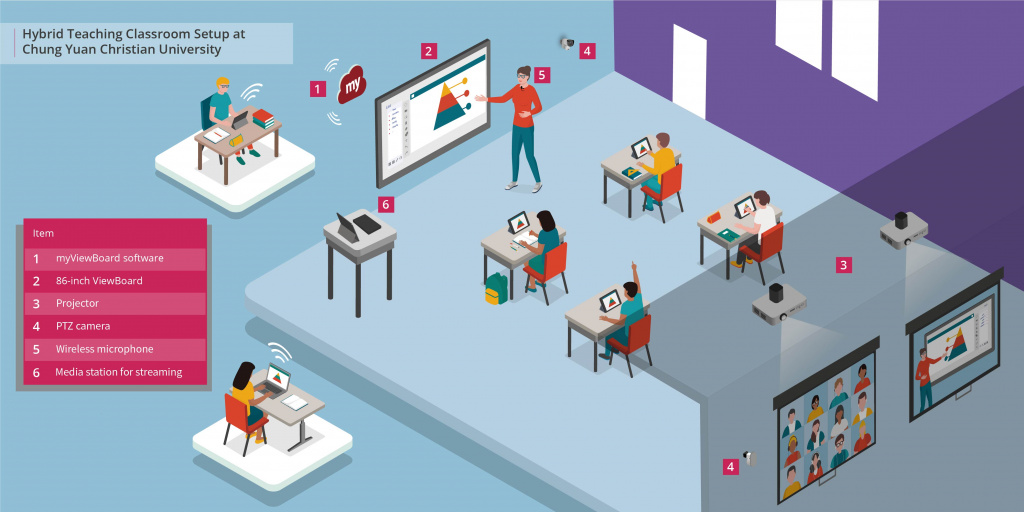
Once upon a time schools and colleges had interactive whiteboards but many teachers found these unsatisfactory. The glare, the audio quality, problems with Lighting and Display. In fact, often they were just used to display static PowerPoint type activities. They were interactive in the sense that the teachers could make things happen on screen but students were only involved if they got out of their seat, came to the front and touched the board. This was often slow and disruptive. In early years settings some pupils were just too short to use the board. Then came Covid and many schools realised that students using Remote Access were at a disadvantage when it came to participation.
The pandemic continues and schools and universities have realised that hybrid teaching is here to stay. They must integrate online and physical classrooms, as well as synchronous and asynchronous teaching. To do this, they need new models of teaching and new technology if they are to increase interactivity and transcend the time and space limitations of the traditional classroom.
These were some of the issues facing Chung Yuan Christian University in Taoyuan City, Taiwan. The Department of Teaching Chinese as a Second Language had 16,217 students enrolled in the academic year 2019-2020.
The university worked with ViewSonic, a leader in audio visual for over 30 years to create and test out a hybrid teaching classroom that would take into account the overall teaching environment, the needs of teachers, as well as the requirements of individual courses.
So many challenges
In recent years, the internet and technology have developed rapidly, boosting global demand for digital forms of learning, such as mobile and online learning.
Chung Yuan Christian University has promoted online teaching for several years by using pre-recorded videos so students can learn asynchronously and remotely, and developing massive open online courses(MOOCs). This has enabled the university to be at the forefront of technology-based education.